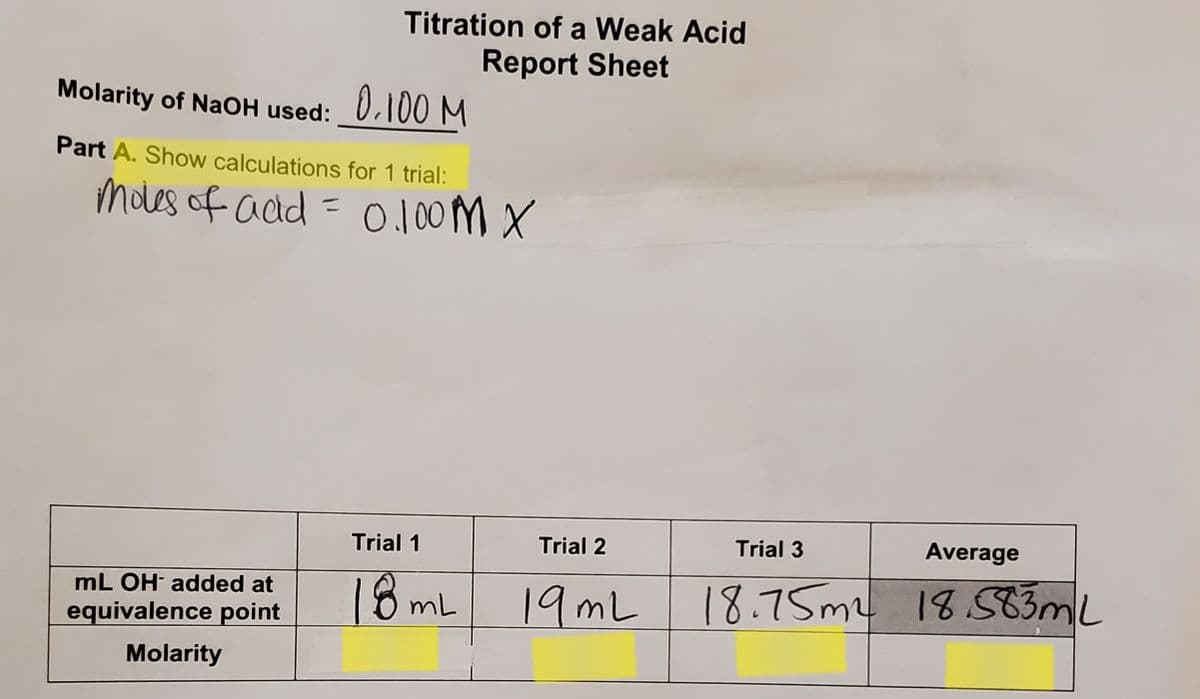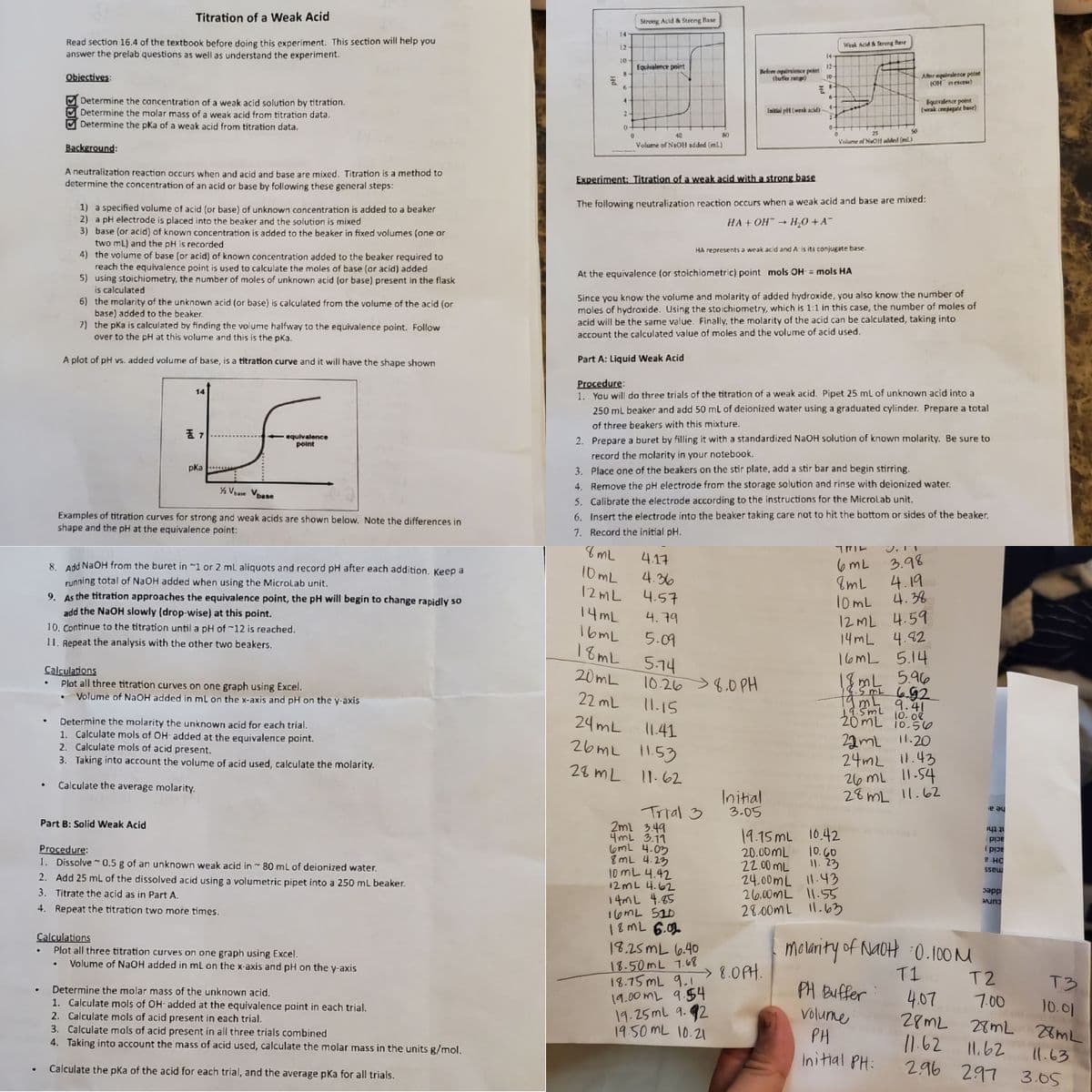Titration of a Weak Acid Report Sheet Molarity of NAOH used: 0.100 M Part A. Show calculations for 1 trial: moles of acd = 0.100M X %3D Trial 1 Trial 2 Trial 3 Average 18mL 18.75m 18SC3ML mL OH added at 19ML equivalence point Molarity
Ionic Equilibrium
Chemical equilibrium and ionic equilibrium are two major concepts in chemistry. Ionic equilibrium deals with the equilibrium involved in an ionization process while chemical equilibrium deals with the equilibrium during a chemical change. Ionic equilibrium is established between the ions and unionized species in a system. Understanding the concept of ionic equilibrium is very important to answer the questions related to certain chemical reactions in chemistry.
Arrhenius Acid
Arrhenius acid act as a good electrolyte as it dissociates to its respective ions in the aqueous solutions. Keeping it similar to the general acid properties, Arrhenius acid also neutralizes bases and turns litmus paper into red.
Bronsted Lowry Base In Inorganic Chemistry
Bronsted-Lowry base in inorganic chemistry is any chemical substance that can accept a proton from the other chemical substance it is reacting with.
Please help me fill in the highlighted. I don't know. Please explain how to get the answers. Thank you in advance.


Trending now
This is a popular solution!
Step by step
Solved in 5 steps









